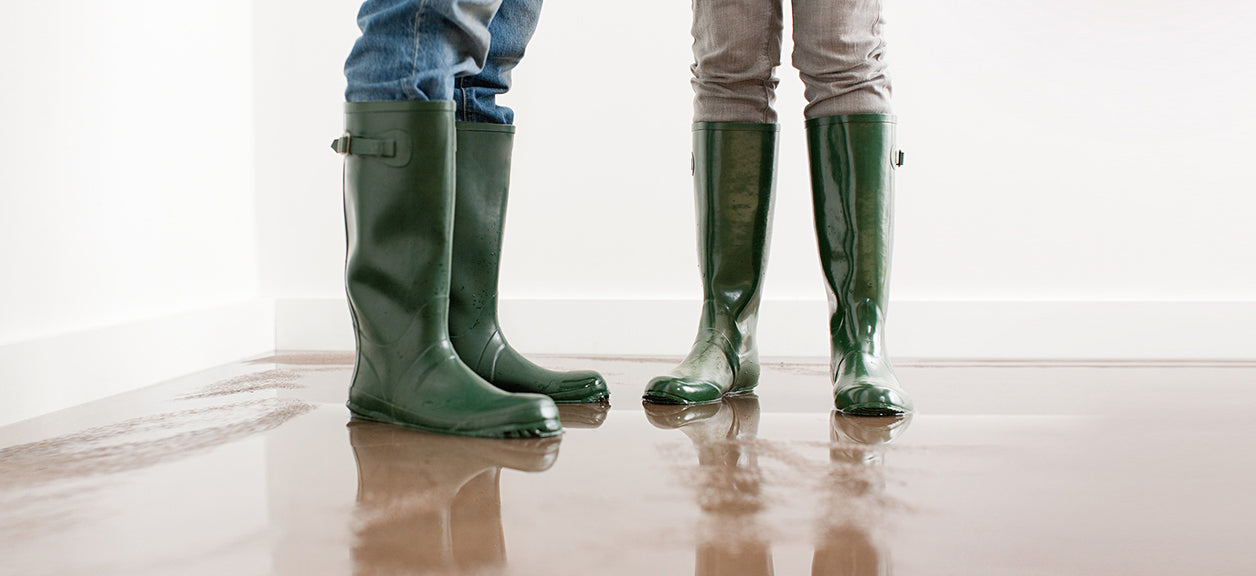
Hurricane season means mold
Hurricane season is still in full swing and, with it, the danger of flooding—and the problem of mold. That’s because dampness promotes growth of this fungus in temperatures between 40 degrees and 100 degrees Fahrenheit. But one in 20 Americans are allergic to mold, and people with asthma, allergies or other breathing conditions are particularly sensitive to it.
With that in mind, here’s what you should know about how to prevent mold from developing in your home after a flood and what to do if the stuff has already started to grow.
General basics
First things first. Check for structural stability to make sure it’s safe to enter your home. If the house has been closed up for several days, open doors and windows for at least 30 minutes to let the air out.
If the area is less than 10 square feet, homeowners or renters can clean it up themselves. For larger spaces, consider hiring a certified remediation professional. Keep children away while work is being done. Wear eye protection that doesn’t have open vent holes, a respirator with a high protection level, hard hats and goggles. And use gloves that are non-latex, vinyl, nitrile or runner, as well as coveralls.
Preventing mold
Mold can grow on just about any material that’s wet for more than about 48 hours. Plus the longer the mold is there, the faster it can spread. So it’s important to dry areas where water pools as quickly as possible after the flood.
If it’s safe to turn on the electricity, use a “wet-dry” vacuum, an electric-powered water transfer pump or sump pump to eliminate standing water. Otherwise, try a portable generator to power the equipment, making sure not to turn on the engine of any gasoline-powered tools inside the home. In addition, fans and dehumidifiers can remove additional moisture, but place fans at a window or door to blow the air outwards. You can also turn on your HVAC system to eliminate excess moisture, but not until after you have it professionally cleaned. To prevent water from re-entering your home, make sure you have good drainage of rainwater away from your house and that basements and crawl spaces also have proper drainage.
You’ll probably need to discard items that can’t be washed and disinfected. In particular, such things as carpeting, padding and stuffed animals are likely culprits, because they absorb water particularly quickly and dry slowly.
Cleaning up mold after it’s formed
Bleach is useful for killing mold on nonporous surfaces, such as tile. But it’s not effective on wood, drywall and other porous material. In fact, bleach can encourage more mold growth. When using bleach, it’s best to use no more than one cup to one gallon of water. Also, never mix it with ammonia, because that can create toxic fumes. And make sure to open windows and ventilate the area.
Because dead spores can still cause health problems, you also need to remove mold after you’ve killed it. Wipe or vacuum the area. Then use a non-phosphate cleaning solution and hot water.
Finally, using a smart air purifier with a HEPA filter, like Coway Airmega, can help clear the air of mold and other particles.
Disclaimers
1Coway air purifiers have been proven to trap dust, pollen, dander, viruses and bacteria in the air based on KCL (Korea Conformity Laboratories) testing.They have been tested in a 30㎥ size chamber according to the Korea Air Cleaning Association standard (SPS-KACA 002-132:2022 Modified) to measure the 0.01㎛ size of particle removal rate. It was tested on maximum airflow speed in normal room temperature and humidity conditions. The performance may vary in the actual living environment of customers.
→ Tested with Airmega Aim, 50, 100, 150, 160, Tower AP-1216L, Mighty AP-1512HH, MightyS AP-1512HHS, 200M, Icon, IconS, 230, 240, 250, 250 Art, 250S, 300, 300S, 350, 400, 400S, 450, ProX
299.97% of viruses, bacteria, fungi and pollen were verified to be removed from the air for Coway air purifiers which have Green True HEPA™ filter applied based on the Japan Food Research Laboratories(JFRL) testing according to JEM 1467 standard.
→ Tested with Coway Airmega Mighty AP-1512HH, MightyS AP-1512HHS, 250, 250 Art, 250S, 300, 300S, 400, 400S
→ All tested by JFRL and received above result within below time.
4The concentration of ammonia, acetaldehyde and acetic acid were proven to be removed within 30 minutes by FCG Research Institute, Inc. Human Life Science Lab. It is not a demonstration result in the actual use space. Not all odors and gases may be supported. → Tested with Coway Airmega 150, 160, Mighty AP-1512HH, MightyS AP-1512HHS, 400, 400S
5The coverage area of the air purifier is based on an area where the air cleaner can make two air changes per hour (ACPH). An air change per hour translates to how many times an air purifier can clean an area, assuming the height of a ceiling to be 8 ft, in one hour. Therefore ** means two air changes per hour means that the cleaner can clean the area once every 30 minutes and * means air changes per hour means that the air purifier can clean the area once every 60 minutes.
10Terms and conditions apply. Discounts, including promotions, coupons, bundle discount and subscription discount, cannot be stacked on top of other coupons. During promotional periods, discount codes will not be able to be applied to orders. Promo codes may apply to products only—filters, accessories, and new products within 3 months of the release date are not included.
11Based on Coway R&D internal laboratory testing, activated carbon filtration was shown to remove up to 95% of ammonia odors within 40 minutes, and up to 99% of fecal odors within 20 minutes. Actual performance may vary depending on usage conditions.



























